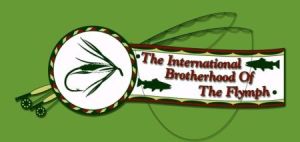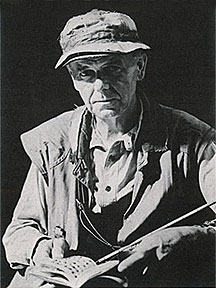“.......Pleasure is spread through the earth, In stray gifts to be claimed by whoever shall find”
William Wordsworth

Home
V.S. Hidy Collection
Literature
Articles
Fly Pictures
Fly Tying
Members
Info
Join

“ We fish for pleasure; I for mine, you for yours” Leisenring’s Notebooks
Hooks and Hackle
“Old” “New”
Redditch scale Pennel Scale
18 0000
17 000
16 00
15 0
14 1
13 2
12 3
11 4
10 5
Hackle Descriptions: by Donald Nicolson
Partridge: Brown speckled back feathers and grey speckled breast feathers. The covert wing feathers are of use as hackles and obtaining small enough back and breast feathers is often a problem.
French Partridge: The wings supply dirty, olive-grey marginal covert feathers which may be used just as they are, or dyed various shades of olive green with waterproof Pantone pens.
The most useful shades are 104 and 396.
Woodcock: The wings supply superb hackles: rich brown, barred marginal covert feathers and paler buff-brown barred under-covert feathers.
Grouse: This game bird provides dark brown feathers with orange speckles from the marginal-coverts, mottled feathers from the base of the neck, reddish-brown back feathers and smoke-blue under-covert feathers (as used in the Poult Bloa).
Also known as Moor Game. Some patterns call for a Black Grouse, while the majority of patterns are calling for a Red Grouse.
Snipe: A whole body is useful for the mottled brown rump feathers are good hackles: the marginal coverts and under-coverts present the most popular hackles. For the Snipe and Purple, feathers from the jacksnipe rather than the common snipe are preferable but I can envisage problems in obtaining any snipe feathers in the near future. For such flies as the Snipe and Purple, substitute feathers may be obtained from the starling.
Nowadays most people simply say "Snipe", but there are two different birds concerned here. The Jack Snipe (Lymnocryptes minimus) also called a "Judcock", and the common Snipe (Gallinago gallinago).
Coot: Excellent dark sooty hackles from the marginal-coverts; unfortunately, small feathers are few in number.
Waterhen or Moorhen: Very useful dark grey feathers from the marginal coverts, lesser-coverts and under-coverts. Once again obtaining feathers from this bird may well become verydifficult. Unless you are able to find someone who has a supply, use substitute feathers from Jackdaw, Starling or Coot.
Cock Starling: The starling is an invaluable bird and purchasing a whole body skin is a must. Apart from the many feathers, which make good hackles in their own right. the Starling supplies a host of substitute feathers for the hackles of other birds. In particular there are excellent marginal and lesser covert hackles, as indicated in later dressing notes, paler under-covert feathers and lots of good hackles on the back, neck and wings. Dark feathers with a green and purple sheen should be especially prized.
Starling wings are also dyed brown and sold commercially as ’landrail substitute’, and dyed black and sold as ’swift substitute’.
Jackdaw: Dark, smoke-grey throat hackles.
Brown Owl: Now very difficult to obtain but once commonly employed and very useful. Any reddish-brown marginal covert feathers may be substituted and I recommend French Partridge hackles colored with a Pantone pen.
Golden Plover: The wings supply beautiful marginal covert feathers: they are mousey-colored and marked by very distinct yellow blotches. Once again, supplies may now be very limited and you must use substitute hackles. Starling feathers, which have paler patches on them, may be used; the paler patches can be dyed yellow with a Pantone pen. Appropriate hackles from a Starling occur under the wing, where it joins the body.
Natural Hen Hackles: Obtain capes or selected packets of Greenwell, coch-y-bondhu, furnace, soft black, blue dun, red brown, ginger, honey dun and badger (henny-cock). Natural blue dun capes are expensive and you will probably have to settle for a dyed cape. In the nineteenth century, coarser-fibred poultry hackles were employed because the thicker fibers more closely equated the fibers of game bird hackles. If you can obtain such feathers, use them, because coarse red-brown poultry feathers, for example, make a good substitute for brown owl. When using fine-fibred hen hackles it is necessary to add an extra turn when hackling or the hackle will be even too sparse for a traditional North Country fly.
Dyed hen hackles in the following colors will be found necessary for a number of patterns:- crimson, claret, chestnut brown, dark brown, jet black, purple, yellow (not too deep a shade), and various shades of olive.